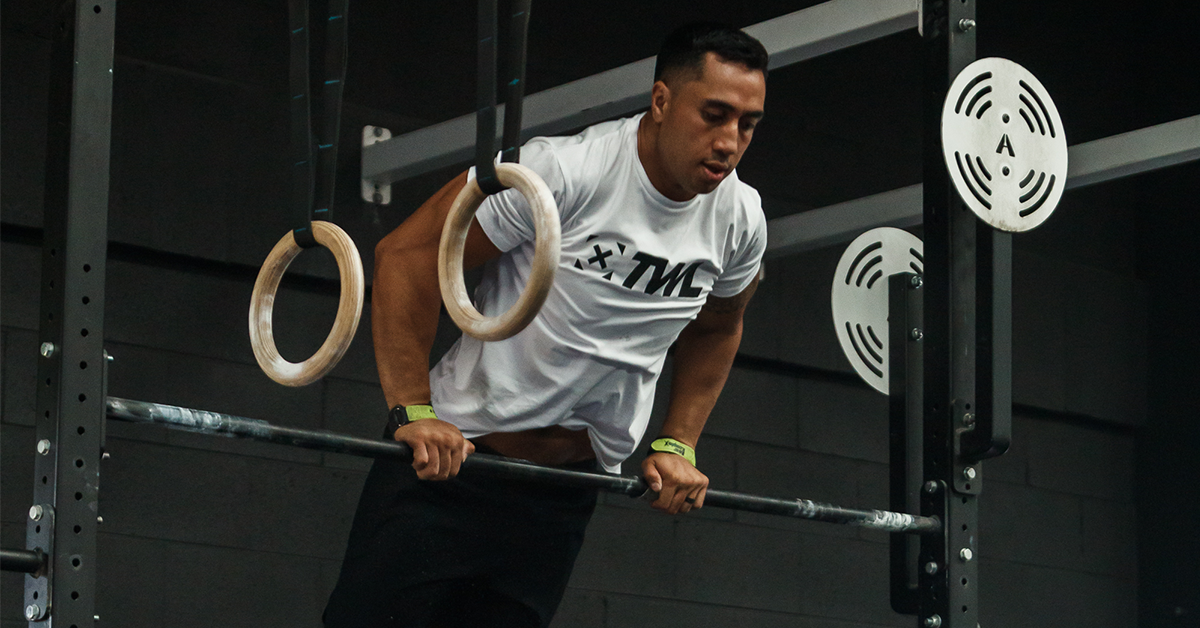Make no mistake about it: correctly scaling a workout is hard — like, really hard. Maybe even harder than the workout itself. There are so many factors to consider for each and every workout. The same movement can be scaled in any number of ways given a particular timeframe or rep scheme (that whole “constantly varied” thing, am I right?), not to mention the athlete in question’s general fitness level and skill set.
Thankfully, for my sanity and the health of my marriage, the goal of this article isn’t to create some end-all be-all reference guide, which catalogs every workout and the appropriate scaling options for each (literally just thinking about undertaking a task of that magnitude made me want to puke). The actual goal of this article isn’t to provide you with the modifications themselves, but rather to provide you with the tools of understanding when scaling is the best option for you.

What is the Intended Stimulus of the Workout?
If nothing else, the most important concept to take away from this article is this: you need to understand the intended stimulus of the workout. Look at it this way: the same exact workout can be approached and executed in a million different ways. 50 calories on the Airdyne can either be done at a nice, leisurely, stroll-in-the-park pace or it can be done at such a barbaric intensity, you’d think you’d need a leg transplant by the end of it.
You have to have a firm understanding, whether through experience or the guidance of a coach, of the goal of the workout and how it should make you feel, before considering any scaling options.

By figuring out the intent of the workout, you can adjust your scale-downs accordingly. Scaling shouldn’t come in a one-size-fits-all variety. If the prescribed deadlift is too heavy, ask yourself or a coach what the goal is: should I be able to move it for reps or should it be a challenging load I have to do in small sets or singles? It shouldn’t be, “Welp, that weight is way too heavy. Time to load up 50kg,” regardless of the prescribed weight.
Plus, nobody wants to be that guy that’s already on the third movement of the workout while every else is still struggling through their first set of heavy deads. The same is true in reverse. Missing the mark on the intention of the workout is a cardinal sin for any serious athlete.
Just Because You Can Doesn’t Mean You Should
There’s a certain level of pride that goes hand-in-hand with writing “Rx” on the whiteboard next to your name and score, but at what cost? Look, every day is different and I get that. The gym and your outside life aren’t mutually exclusive. Some days you may be in need of a win, and that little self-esteem boost that coincides with doing the workout as prescribed, even if it means you have the worst Rx score in the gym.
However, you should never let ego dictate your approach to a workout. Sometimes, just because you can do a workout as prescribed, or even a more difficult scale-down variation, doesn’t necessarily mean you should. Again, this comes down to intent.

If doing the workout as prescribed, or choosing too difficult of a scale-down, causes you to miss the desired stimulus, then, unfortunately, you did not scale correctly. Just because you can do a 95lb thruster and some pull-ups doesn’t mean that’s what you should do if it takes you 20 minutes to finish Fran. Why? Because the intended stimulus of that workout is an all-out slugfest of workout misery done at a crazy high intensity.
Having to break up reps because the weight is too heavy or only doing pull-ups in singles or doubles because you lack the strength to string together bigger sets, defeats the purpose of what a workout like Fran is supposed to draw out of you. Things like that can be good indicators you may have chosen the wrong scale-down.
Create Symmetry
This last one isn’t so black and white as the others. Again, it comes down to (you guessed it) intent. Most functional fitness workouts are designed with some level of symmetry between the movements and reps to create a complete, balanced workout. Usually, they’re not designed where one movement in overwhelmingly easier or harder than the rest, and neither should your scale-downs.

Take a workout like DT — 5 rounds of 12 deadlifts, 9 hang power cleans, and 6 push jerks. The reason the rep scheme is designed like that is because, at that weight, the deadlifts should be the easiest, hence the most reps, the hang power cleans are second easiest and second most reps, and the push jerks the hardest with the fewest reps.
The difficulty in the movements is reflected in the rep scheme. This isn’t always the case, of course, but a lot of the classic CF workouts are designed this way. It’s about creating balance and parity for an intense but doable workout.
When choosing a scale-down, the objective should be the same. Ideally, in something like an AMRAP triplet, you shouldn’t be getting hung up at any one movement while blowing through the other two. Balance gives way to intensity and proper scaling gives way to proper growth.
No matter where you are in your fitness journey, The WOD Life has everything you need to crush your next workout. Shop online with us today!

















